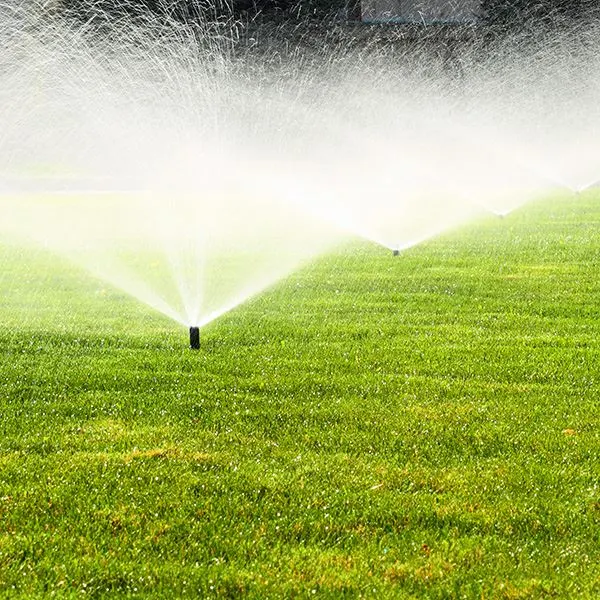The weather is starting to warm, lawns are coming back to life, and trees are starting to bud their first flowers of the year. Springtime is here in North Texas. With springtime comes the need to turn on your irrigation system again, but months of inactivity and exposure to potentially freezing weather could have left your sprinklers in a state of disrepair. Is your irrigation ready for the spring and summer season? Follow this five-step checklist and your system will be in great shape for the months ahead.
Are Any Heads Broken?
The first step is to walk around your property, find where your sprinkler heads are, and check them to see if any feel loose or even completely detached. Over time, sprinkler heads can and do eventually break off, particularly from an unexpected impact that might even include simple standard foot traffic. However, you might not even recognize that your sprinklers have broken until you turn them on for the first time and are faced with the dreaded sight of one of your heads gushing like a small geyser.
Take a quick walk around your property and give each sprinkler head a gentle nudge to test its stability before turning them on. Any heads that are wildly loose should be repaired before turning on that particular zone.
Are Any Exposed Lines Leaking?
Not all of your sprinkler lines are buried underground. Drip system lines and even some water irrigation lines could be located above ground, and those lines could have been severely impacted by freezing weather over the winter season. When you turn your irrigation water on, check these lines to see if any are leaking. Any leaking lines should be repaired before running your sprinkler system, particularly as some of these lines will continue to leak even when your sprinklers aren’t running.
Are Any Nozzles Dirty?
Dirty nozzles are an easy fix, but they’re a problem that could cause some serious damage to your yard. A dirty nozzle can send water spraying over a sidewalk, patio, or other areas where you don’t have any grass or plants to water. It could prevent water from reaching the furthest distance it needs to. It could even damage a sprinkler head by causing excessive pressure buildup.
Cleaning a dirty nozzle is easy—grab a small screwdriver or pick tool and use it to dig any visible dirt out of the spray nozzle (this is typically easier to do while your sprinklers are running. Once free, your sprinkler should return to projecting at full strength.
Are Any Patches Not Being Watered?
While you’re test-running your sprinklers for the season, use this opportunity to check your sprinkler spray and see if any patches on your lawn aren’t being watered. Over the course of a season (and the months that follow), sprinklers can shift slightly, causing gaps in coverage to develop. These gaps will often struggle to grow and may die completely, and that means it’s important to fully adjust your sprinklers right at the start of your season. Adjustment is typically extremely simple—take a small screwdriver and twist the adjustment screw on the top to change the strength of your sprinkler, then twist the actual sprinkler nozzle itself to adjust the angle.
Do You Need to Expand Your Irrigation System?
Do you have grand plans for expanding your outdoor garden? Are you looking to stretch your lawn even further onto your property? These are just a few reasons why you might need to expand what your irrigation system is capable of. In the case of simple systems like drip systems, expansion is generally simple. However, adding new sprinkler zones or further extending pipelines is a job best left to the professionals in order to avoid any potentially serious problems.
For help with all of your irrigation needs, turn to the seasoned landscaping experts at Purple Care! Dial (817) 880-6052 today.




Comments (0)
Thanks for your comment!
Thanks for your feedback! Your comments have been successfully submitted! Please note, all comments require admin approval prior to display.
Error submitting comment!
There is a problem with your comment, please see below and try again.